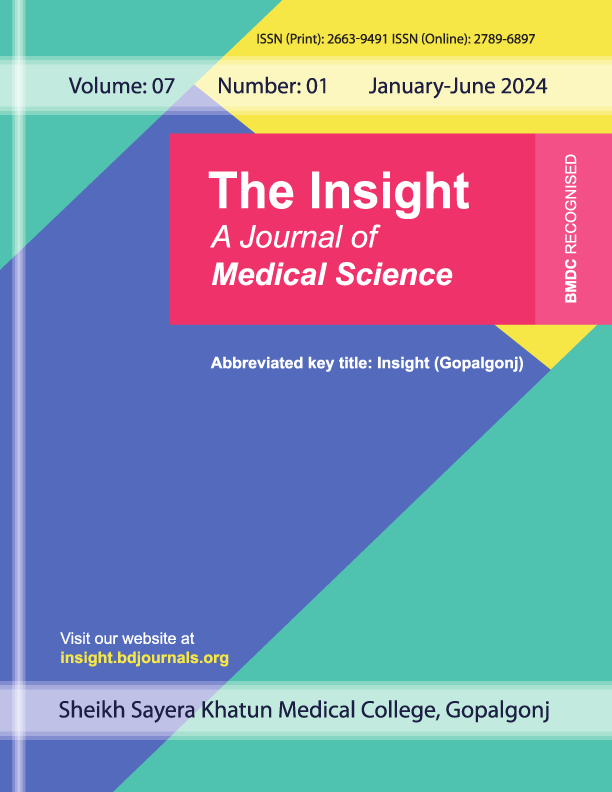Demographic and Clinical Profile of the Patients of Cerebral Stroke Treated under the Department of Neurology in a Tertiary Level Hospital
Published 15-11-2024
Keywords
- Demographic,
- Clinical,
- Profile,
- Cerebral,
- Stroke
- Patients,
- Treated,
- Neurology,
- Infracts ...More
Copyright (c) 2024 The Insight

This work is licensed under a Creative Commons Attribution 4.0 International License.
How to Cite
Abstract
Introduction: Cerebral stroke is regarded as one of the major causes of death and disability in most developed and developing countries of the present world including Bangladesh. It occurs due to thrombosis or embolism that obstructs the flow of blood towards the brain; this mostly results in a condition where there is a death of brain tissue, medically referred to as infarction. Objective: This paper aimed to analyze the demographic and clinical characteristics of patients with cerebral stroke treated under the department of Neurology at a tertiary level hospital in Bangladesh. Methods & Materials: This was a descriptive type of cross-sectional study conducted at the Department of Neurology in Chittagong Medical College and Hospital, Chattrogram, Bangladesh during January, 2024 to June, 2024. A series of 93 confirmed diagnosed cases of cerebral stroke were included in this study using consecutive sampling method. Results: A series of 93 confirmed diagnosed cases of cerebral stroke were included in this study. Among the study subjects, the most frequent 68 (73.3%) had infarcts, followed 21 (22.58%) intracerebral hemorrhage and 4 (4.30%) subarachnoid hemorrhage. Conclusion: This study investigated that infarcts (73.3%) were the most common stroke type, primarily affecting males (55.9%) aged 62-71 years, with 71% of patients from rural areas. Hypertension (64.5%) and diabetes (54.83%) were the most frequent comorbidities, while hemiplegia (88.17%) and aphasia (39.78%) were the dominant clinical presentations. These findings highlight the need for targeted interventions in high-risk groups.


